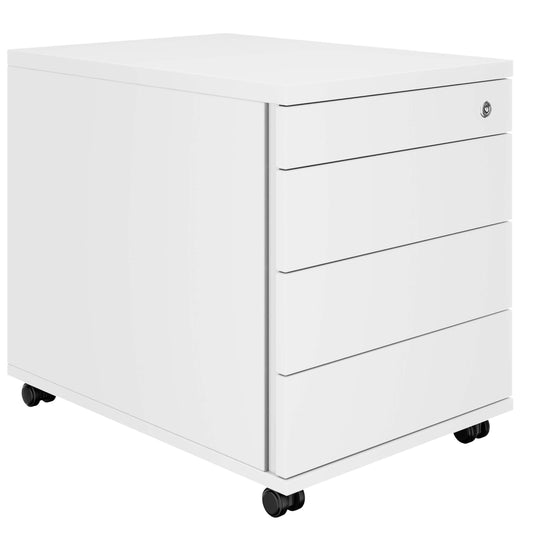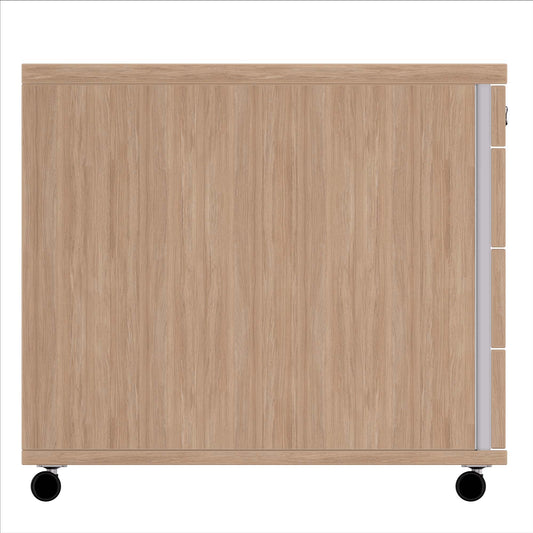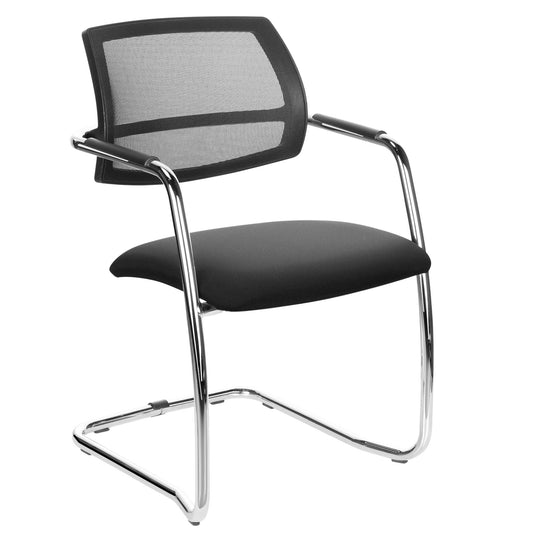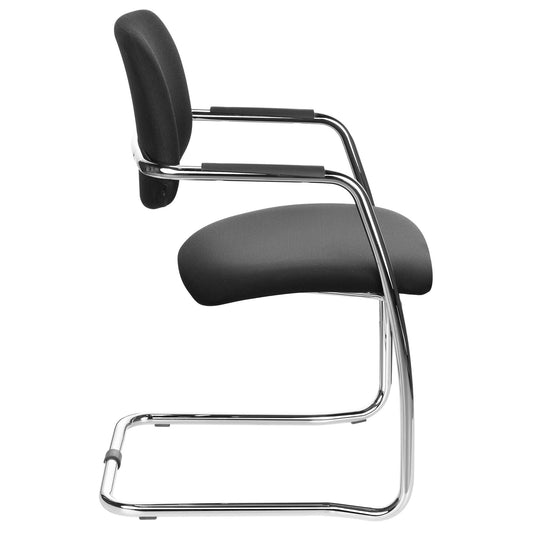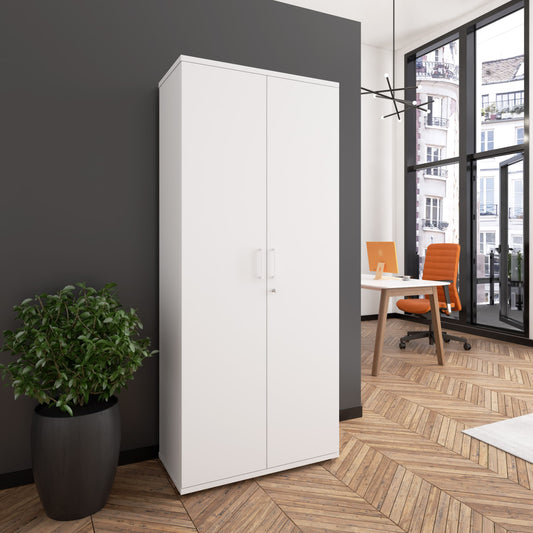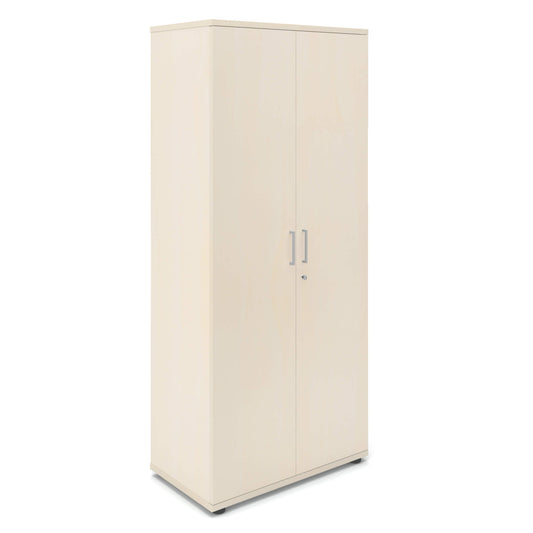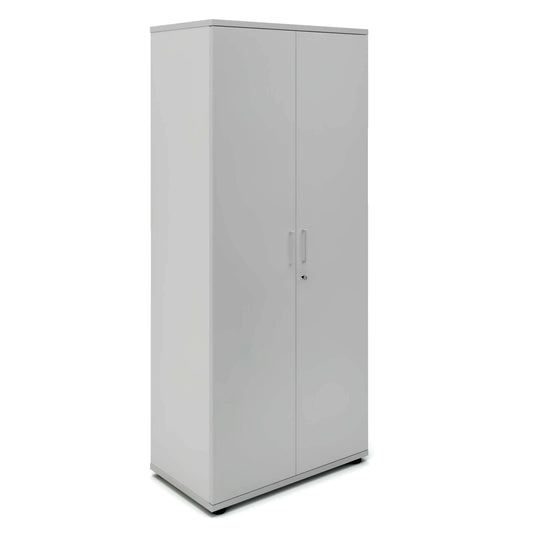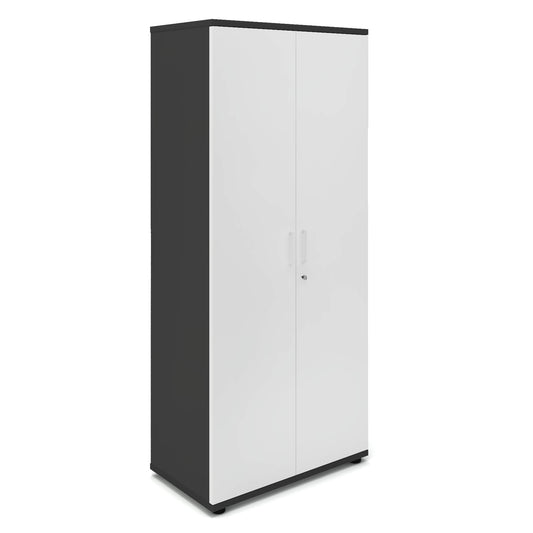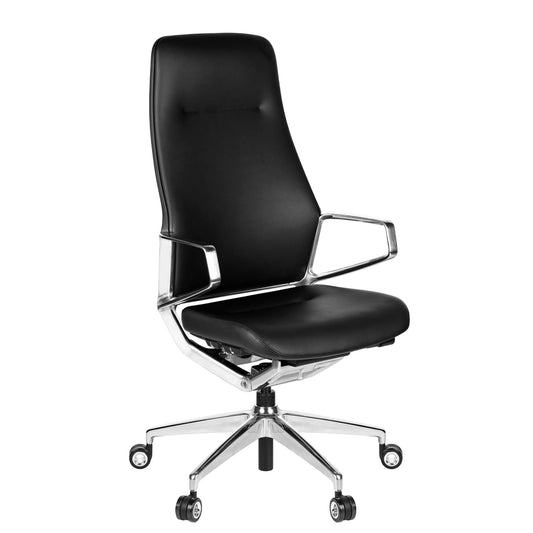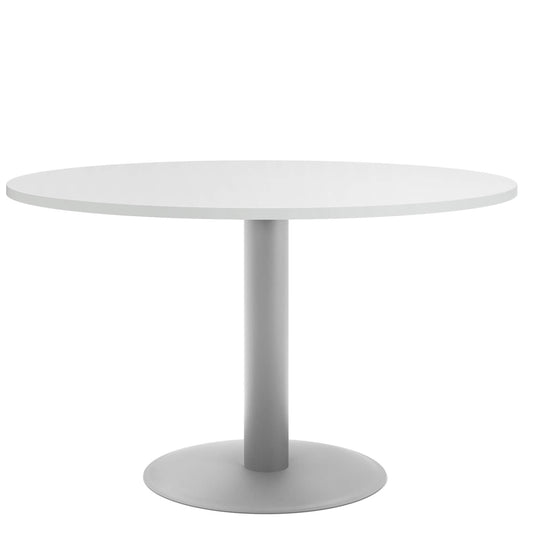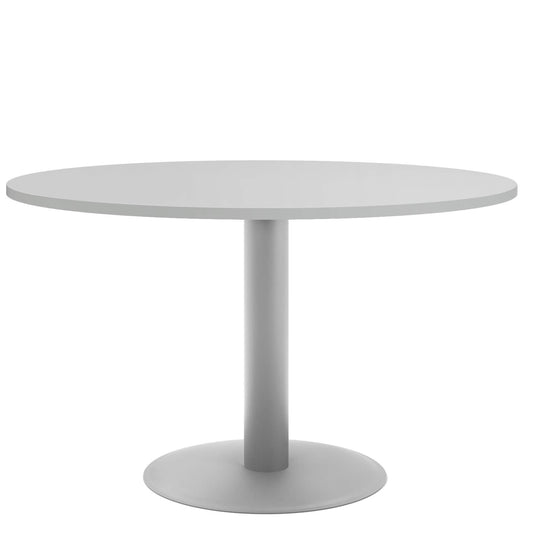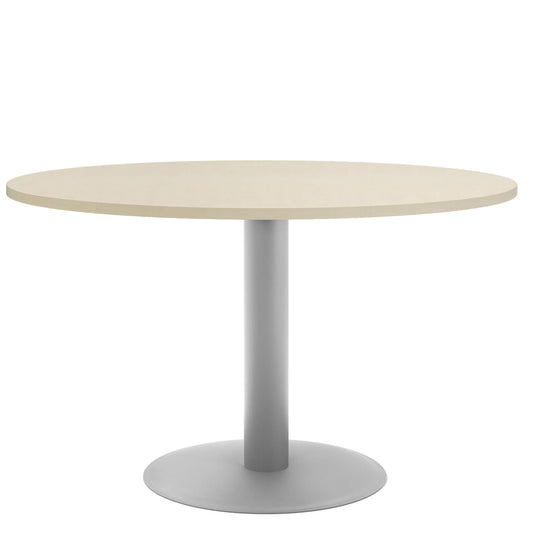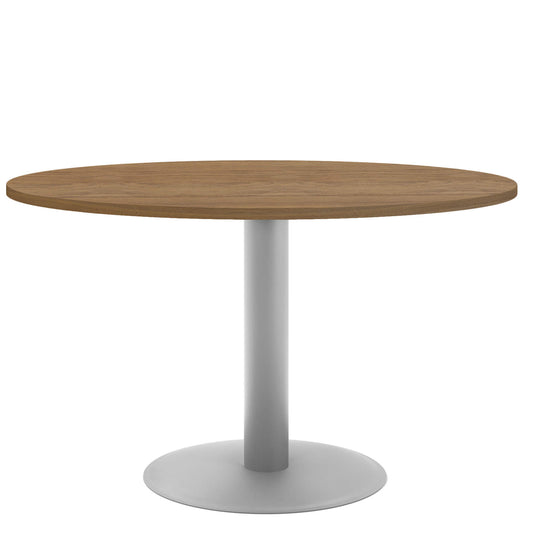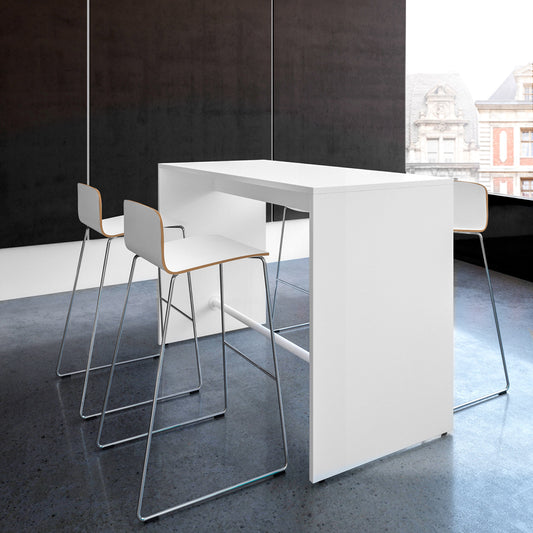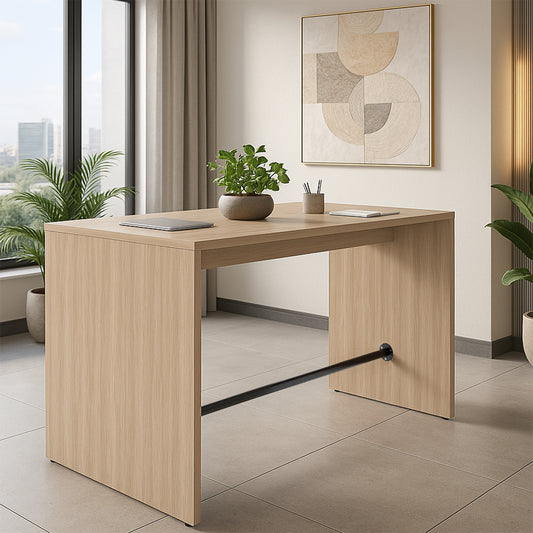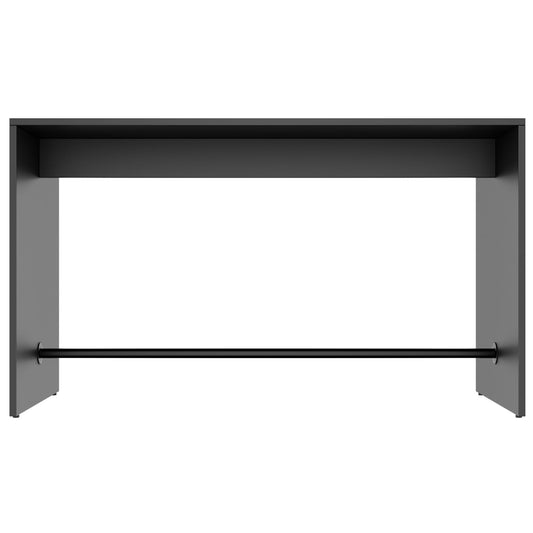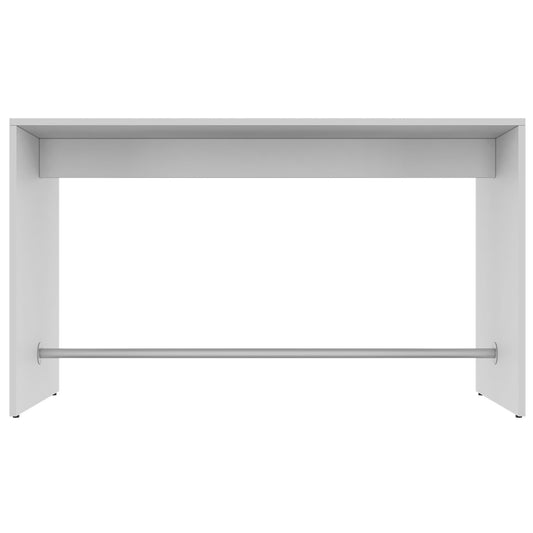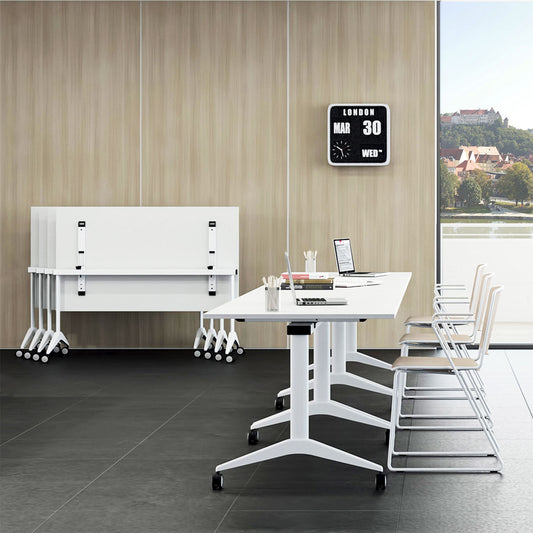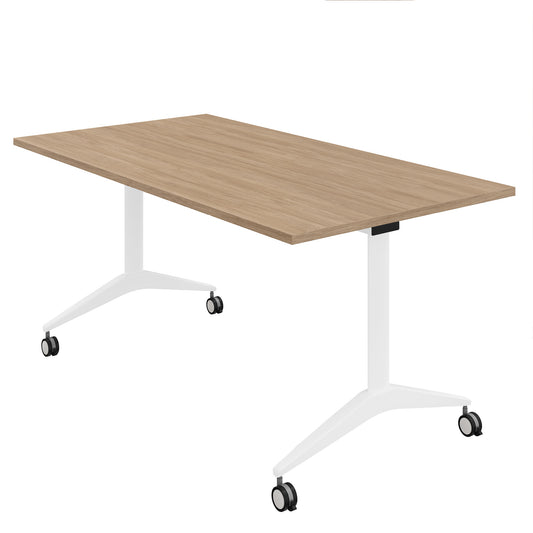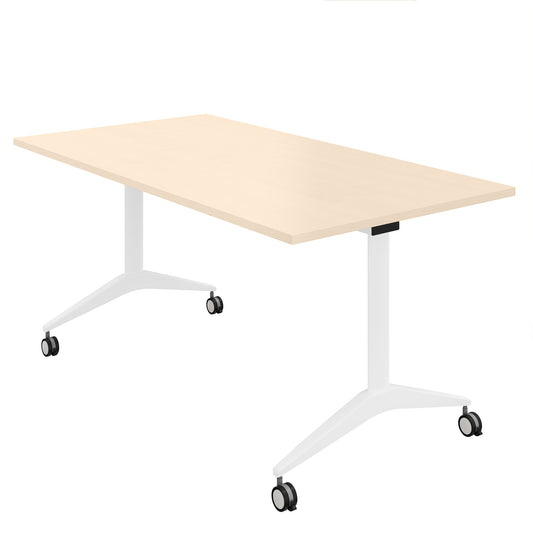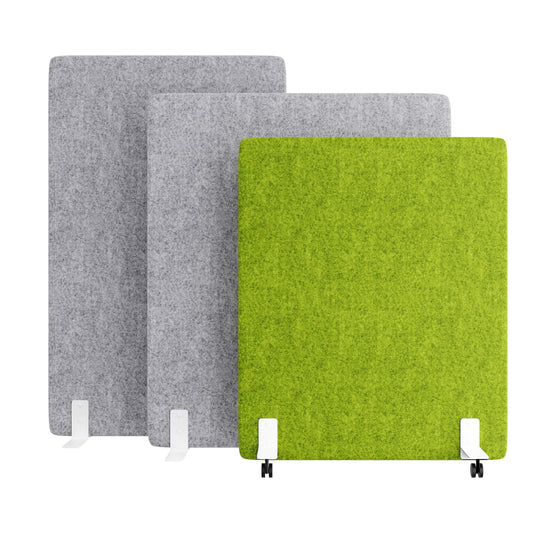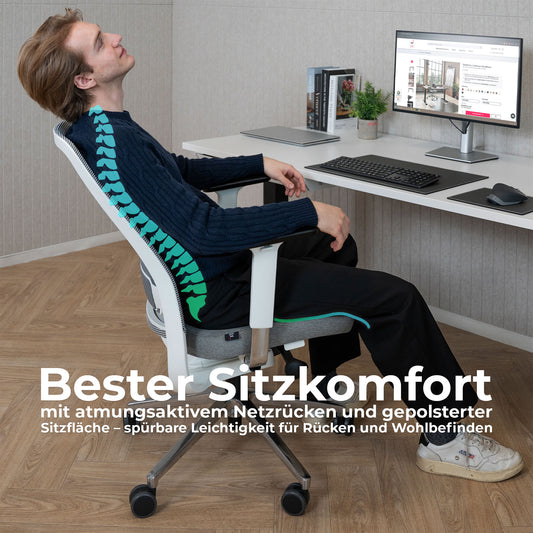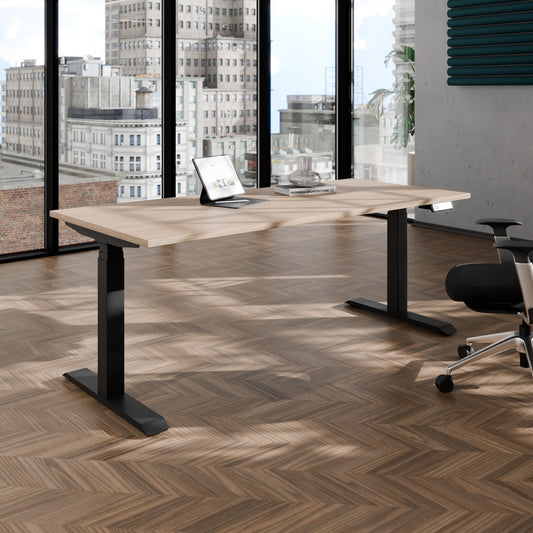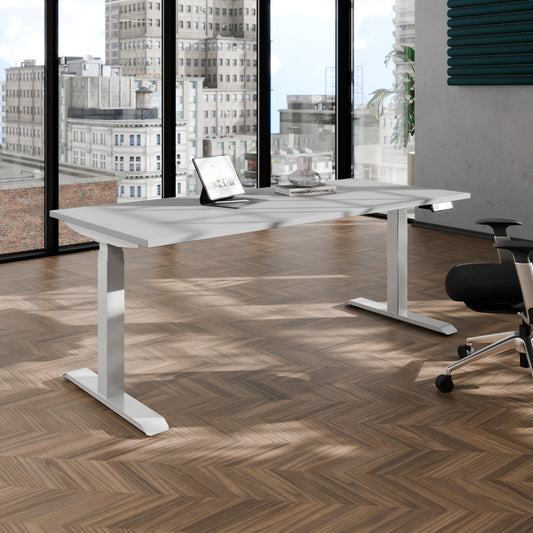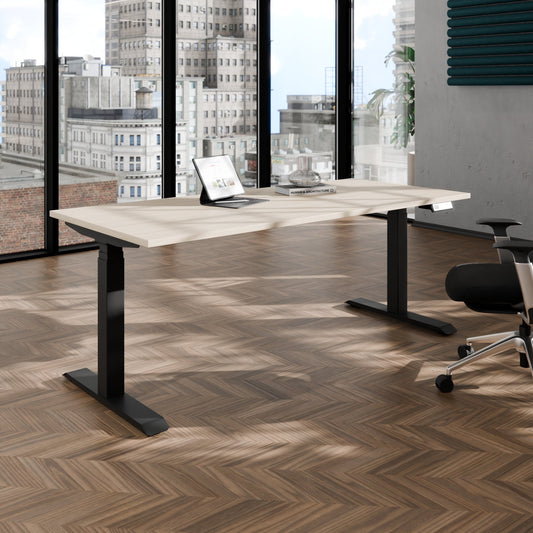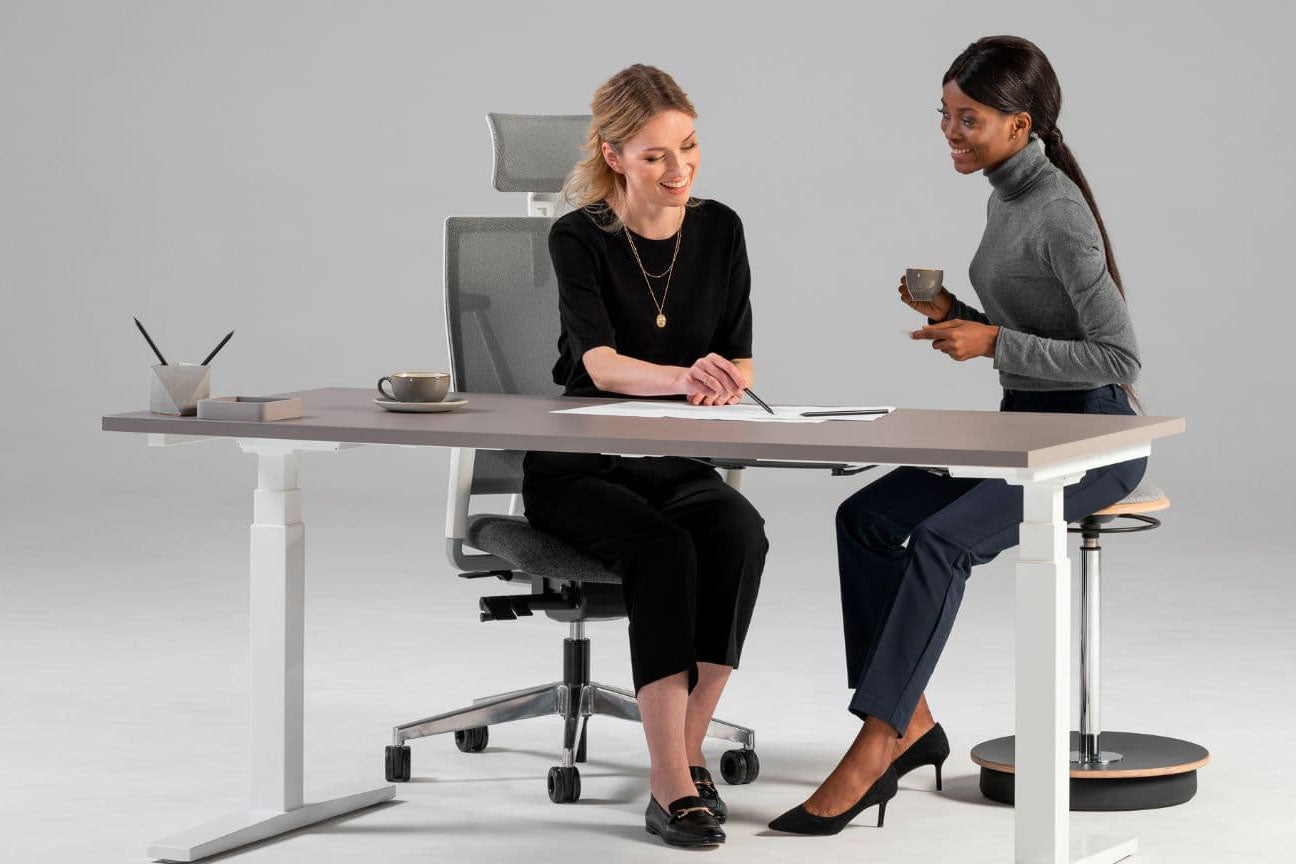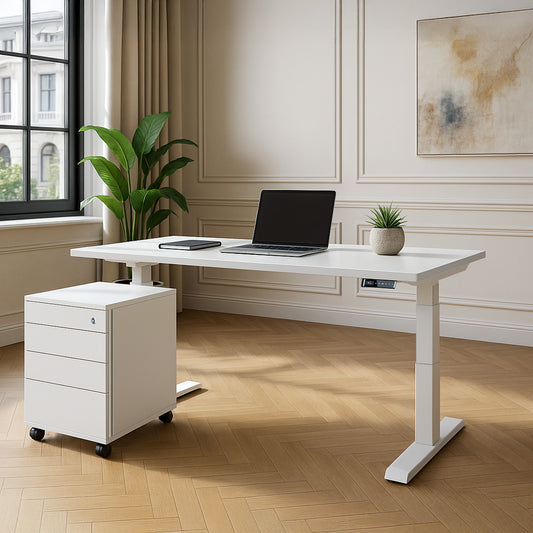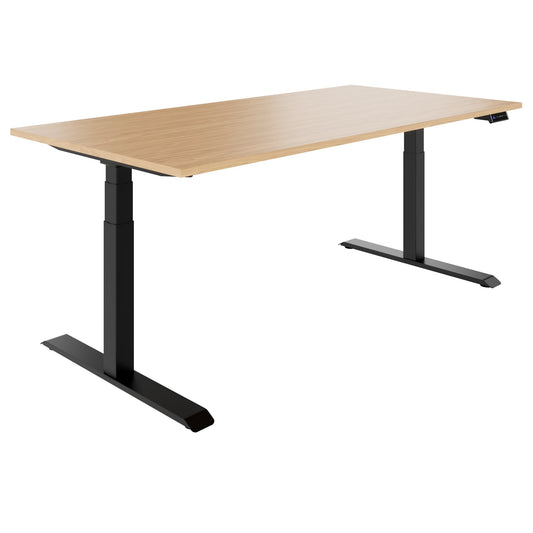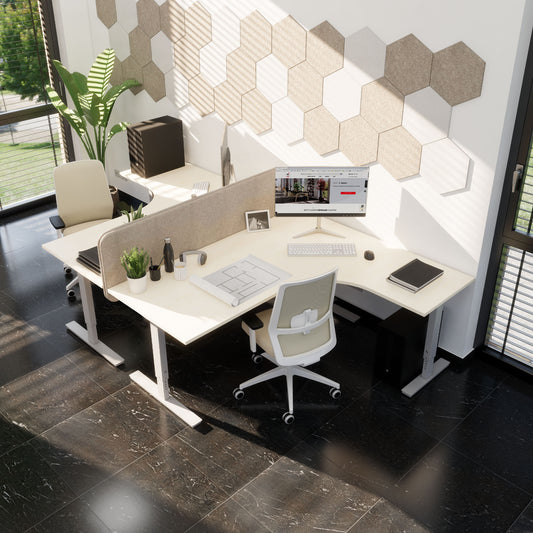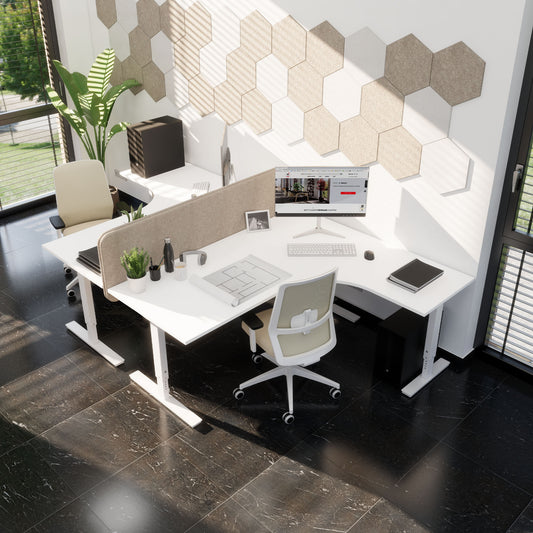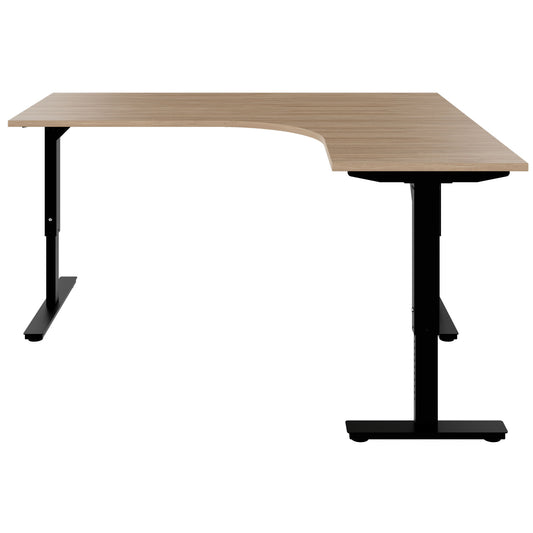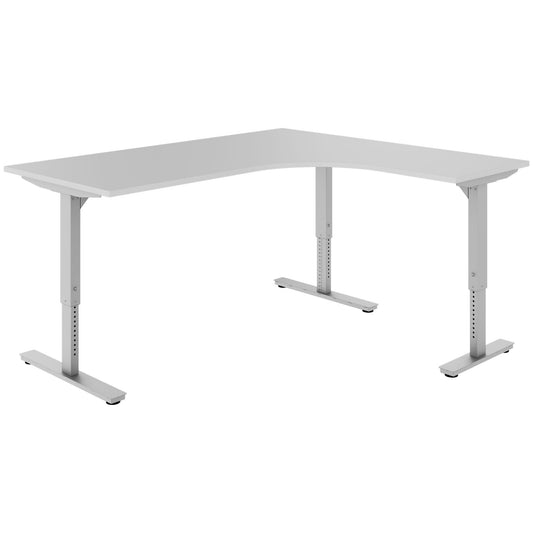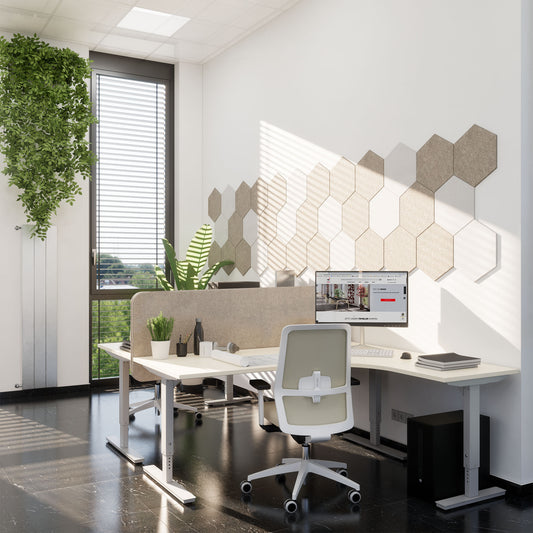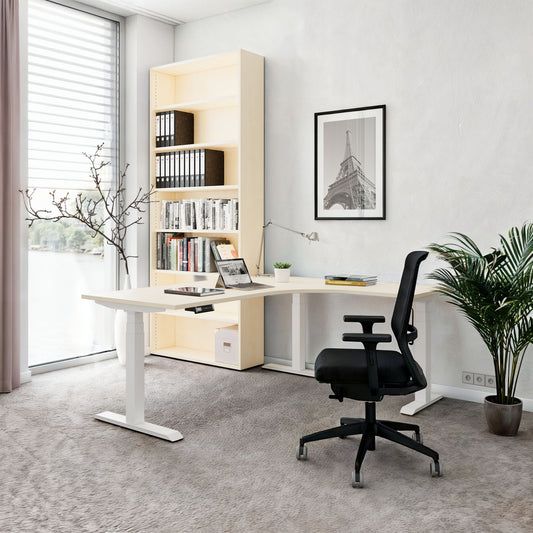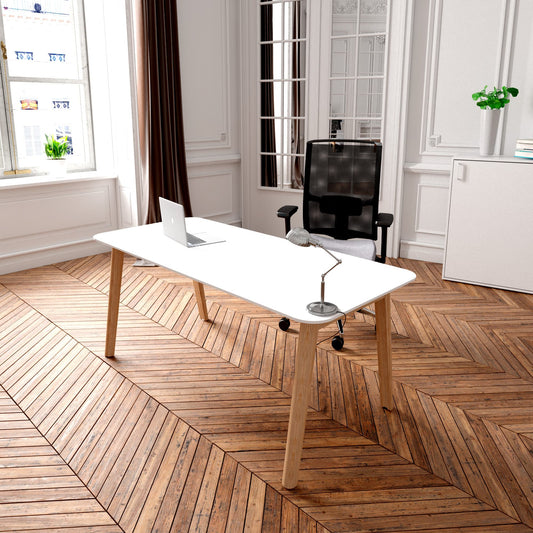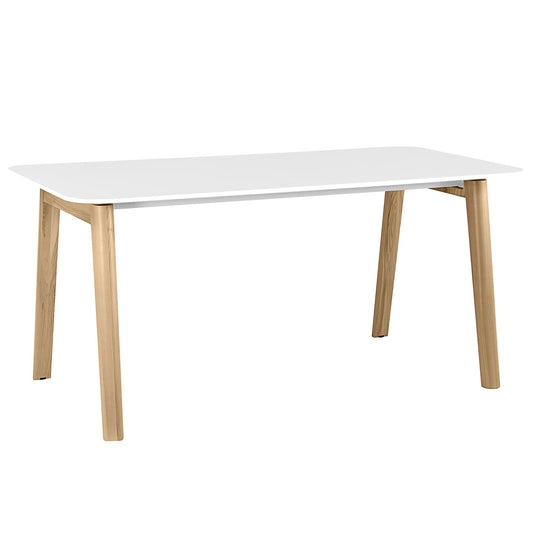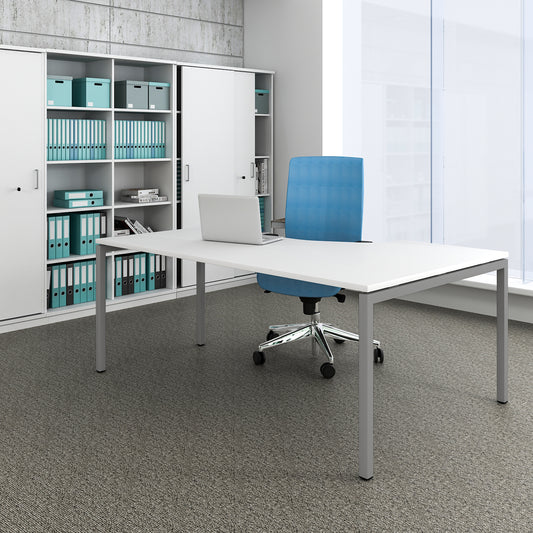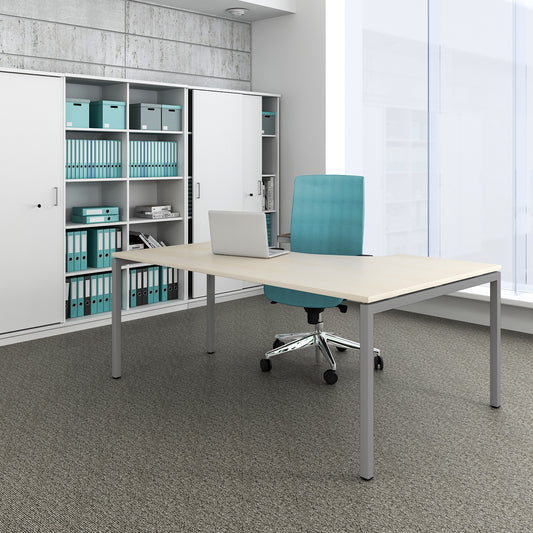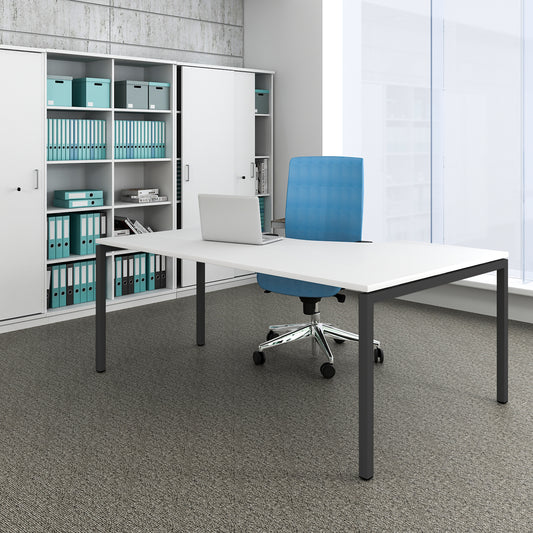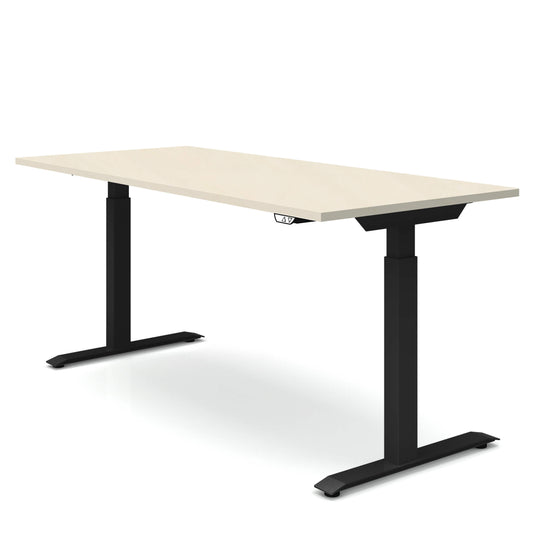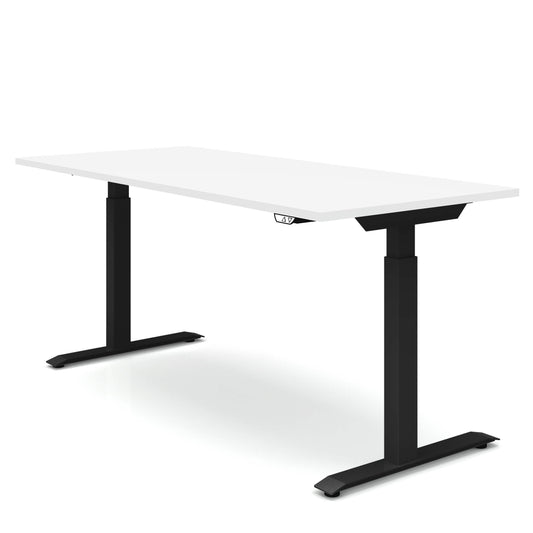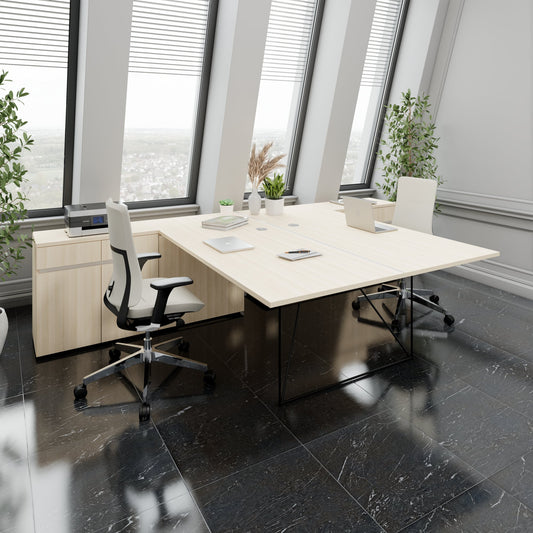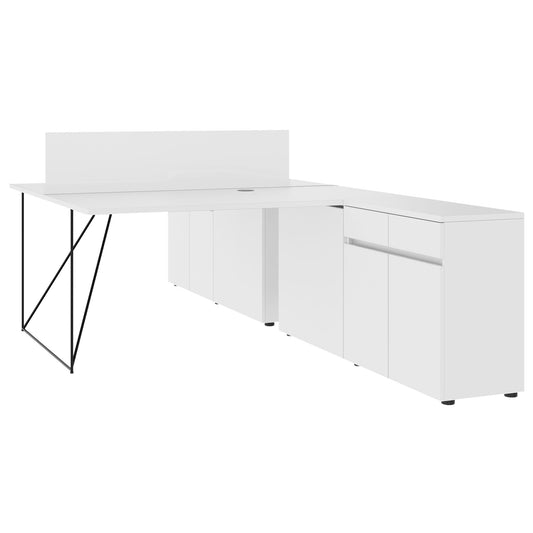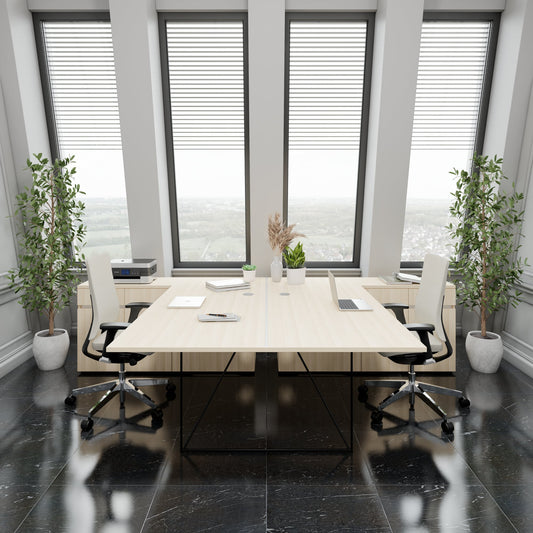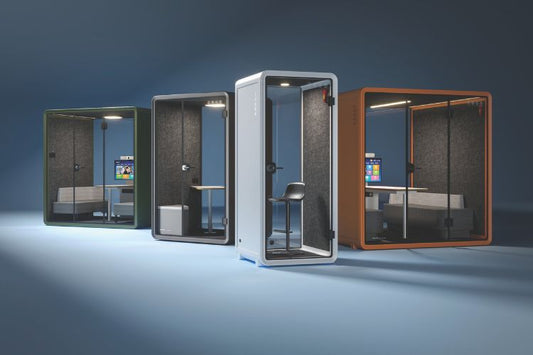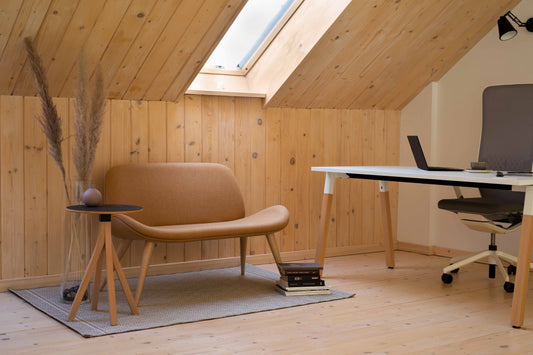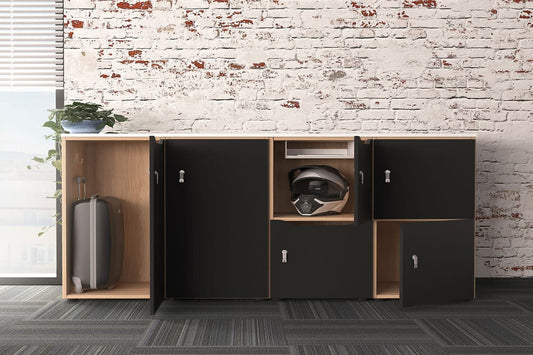What is desk sharing?
Desk Sharing - also written "desksharing" or called "flexible office" - means that the desk no longer just belongs to you. Instead, all employees can choose flexibly every day where they want to work - the Jobs are shared with each other. Originally established by the tech giants in Silicon Valley, the model is becoming increasingly popular with us due to remote work and home office. Because: Desk Sharing not only optimally uses the existing place in the office, but also promotes the creative interaction between colleagues.
When does Desk Sharing make sense?
Are there a lot of field workers in your company or do your employees work in shift work? Juhu, then Desk Sharing could be just the thing for you. The concept works best flexible companieswhose employees are often on the move. Desk sharing can also be an effective job concept for variable working hours, a high proportion of home office or in dynamic industries such as IT. Take the test: To find out whether the share of jobs in your team works, you should first try Desk Sharing for a certain time. Ask your employees regularly whether they feel good and how they want to work in the future.
Excursus: Desk Sharing vs. Shared office
Although often confused together, Desk Sharing and a Shared office are not the same. While employees flexibly share their desks within a company at Desk Sharing, a shared office means that various companies or freelancers share an office space - mostly for cost reasons. This principle is also known as a coworking space. In this shared office, the individual companies often have fixed areas. Within these areas, employees can share the desks as they please, but a desk sharing between the various companies usually does not take place.
Which desk sharing concepts are there?
Every company has its own needs and requirements and not every desk sharing model fits your team. Therefore, you should first familiarize yourself with the different concepts.
Hot desking
Hot desking is, so to speak, the classic among the desk sharing concepts: there are no fixed desks here, but the employees simply choose from the available places every day. That may sound chaotic, but promotes flexible cooperation by sitting next to each other and replacing fresh ideas. According to the motto "First come, first served“A clear open-desk policy helps to avoid disputes and give everyone a fair chance of the best place.
Desk Booking
Sometimes it takes a little more structure - especially if field workers or colleagues from other locations spontaneously need a place in the office. At Desk Booking, employees reserve their shared desk in advance, comfortably either via app or software. So the chaos stays off, and everyone knows exactly where they are sitting the next day.
Activity-based working
Why set a desk if you can simply adapt your workplace to the current task? In the case of activity-based working (AB), the employees choose theirs Square depending on the activity: A desk for concentrated individual work, a conference room for longer meetings or a lounge for relaxed brainstorming sessions. The Zonen -based Desk Sharing, in which the office is divided into different areas, is particularly exciting. So every employee can choose exactly the zone that fits his current task.
What are the requirements for successful desk sharing?
In order for the sharing of jobs to work smoothly and do not wait for you unpleasant surprises, you should clarify some organizational and infrastructural aspects in advance.
Organizational requirements
When it comes to sharing jobs, it is Clear communication The be-all and all ensure that your employees understand how the desk sharing model works and why it is introduced. Training or information events can be helpful. flexibility is also asked: give your employees the freedom to choose their working hours and locations themselves. Because only if not all employees are in the office at the same time can the available places be optimally used. If employees work from the home office or from another location, they still have to have access to all the necessary resources. To do this should Company -wide cloud solutions or collaboration tools be used. The use of a Planning softwareto manage the shared jobs. It is also important, regularly Feedback to get employees in order to continuously improve the system and to recognize possible problems at an early stage.
Requirements for the equipment
What is probably the most important prerequisite for a shared desk? Right: the desk. Since your employees are probably not all the same, shared jobs should be included height -adjustable desks and flexibly adjustable Office chairs be equipped. This enables ergonomic work without complaints due to false seating or the like. It is equally important technical equipment: Each workplace should be equipped with the same necessary infrastructure with regard to laptops, WLAN and Co. Despite shared jobs, every employee needs space for personal work equipment. For example, you create storage space for private bags and documents with flexible Roll container Or final Puckin which laptops can be safely stowed after work.
The golden rules of Desk Sharing: This is how it works without stress!
So that your desk sharing concept runs like clockwork and there are no accidents when running for the best workplace, rules for cooperation should be set up:
- Establish the white desk or clean desk principle: Everyone leaves their workplace as they found it - clean and free of personal objects. Then the desk is ready again for the next one.
- Set maximum useful life: Clear rules for the maximum use time (e.g. the whole working day, until 4 p.m., until lunch, etc.) ensure a fair distribution and efficient utilization of common resources.
- Accept privacy: Despite the rain and walking in the Desk Sharing office, it is important to give your colleague space for confidential conversations and concentrated work.
- Keep an eye on data protection and security: Sensitive data must be protected. Training of employees and clear security guidelines (e.g. locking the screen when leaving the workplace) are essential to prevent data leaks and protect the company and personality data.
- Digitize documents and documents: A digital shelf like OneNote or OneDrive makes it easier to work on shared desks, as employees do not have to transport paper documents from table to table or store them somewhere.
- Provide much -used office materials: Make sure that there is a complete equipment of pencils, punching, scissors and the like on each shared desk.
- Create space for personal items: Offer your employees locks, shelves or other storage solutions to store personal objects such as pictures.
Flexible work or stress factor? The advantages and disadvantages of Desk Sharing
Desk sharing can be a curse or a blessing. Why? The idea of shared jobs sounds promising in theory, but can have your pitfalls in practice. In the end we summarized the most important advantages and disadvantages that you should know before you fall into the adventure desk desk sharing.
-
Advantages
- Lower costs: By using efficient space, companies need fewer office space and thus save costs for rent and additional costs.
- Better cooperation: Due to changing neighbors, colleagues from different departments get to know each other, which leads to new ideas and improved teamwork.
- Optimal productivity: Depending on the work task, employees can switch between different work areas to work more productively.
- Flatter hierarchies: Employees sit next to their superiors, which promotes exchange and ensures a better working atmosphere.
- More self -organization: The employees develop their ability to independently organize and effective time planning for their work, which can lead to more job satisfaction and productivity.
- Equality: In principle, all employees have the same options when choosing and equipping their workplace - regardless of their position or name.
- Increasing employees satisfaction: Since employees can choose their workplace according to their needs and tasks, they are more satisfied and motivated.
-
Disadvantages
- Missing identification: Some employees find it difficult to work on shared desks, which can affect satisfaction.
- Different job requirements: Employees with the need for privacy often find the lack of rest in the large space office.
- Stress and conflicts: The daily search for a free space can be stressful and trigger conflicts about the popular desks.
- Technical requirements: Desk Sharing requires a modern technical infrastructure, which requires additional costs and planning.
- Organizational time required: The daily search for a free workplace and its furnishings take additional time that could be used for the actual tasks.
- Falling team cohesion: Fixed teams can be separated spatially, which limits personal exchange and can weaken the team spirit.
And what do you say: Can you also refer to the office "sharing is caring"? We believe: yes! Desk Sharing is an exciting way to use your existing office space efficiently, but also requires clear rules and the active participation of all employees. Are you ready to face this new way of office organization?
